
by Gary Mintchell | Jul 31, 2019 | Asset Performance Management, Internet of Things, Productivity
Moving to sustainable sources of energy to generate electrical power, as Europe has, requires a balancing act. Solar and wind generation provide an imbalance of power since they only operate when proper atmospheric conditions exist—i.e. sunlight or wind. Hydro generation provides a necessary balance, explained Pier-Vittorio Rebba, technology manager power generation for ABB.
But many hydro plants are aging. Management realizes the need to digitalize operations to obtain the best use of Asset Performance Management applications as well as best optimization of plant assets. ABB and its customer Enel Green Power partnered to digitalize operations delivering predictive maintenance solutions that will lower maintenance costs and transform the performance, reliability, and energy efficiency of its hydropower plants throughout Italy.
The three-year contract will enable 33 of Enel Green Power’s hydroelectric plants, comprised of about 100 units, to move from hours-based maintenance to predictive and condition-based maintenance, leveraging the ABB Ability Asset Performance Management solution. With operations in five continents, the Enel Group’s renewable business line, Enel Green Power, is a global leader in the green energy sector, with a managed capacity of more than 43 GW.
“We are privileged to be partnering with Enel Green Power, a digital pioneer, in their move from hours-based to predictive maintenance utilizing ABB Ability technologies for big data, machine learning and advanced analytics,” said Kevin Kosisko, Managing Director, Energy Industries, ABB. “Predictive maintenance and asset performance management must become a key component of plant operators’ strategies to optimize maintenance operations, minimize risk, improve resilience and reduce costs. The results are more competitive electricity rates, in a more sustainable way.”
Collaborating closely since early 2018, the two companies have jointly developed and tested predictive maintenance and advanced solutions (PresAGHO) via a pilot on five Enel plants in Italy and Spain, including Presenzano, a 1,000-megawatt plant near Naples.
The new contract includes digital software solutions and services that will provide analysis of over 190,000 signals and the deployment of about 800 digital asset models, aimed at improving plant operational performance, reducing unplanned failures and enabling more efficient planned maintenance practices through predictive maintenance. The integration is expected to yield savings in fleet maintenance costs and increase plant productivity.
The ABB Ability Collaborative Operations Center for power generation and water will help bring wider benefits of digitalization and engagement, supporting informed decision-making, real-time solutions and cost savings. The center already provides similar digital solutions and advanced applications for more than 700 power plants, water facilities and electric vehicle charging stations globally.
“With personnel retirements resulting in knowledge gaps and more competitive electricity marketplaces, we believe that many power generation customers globally can benefit from this kind of digital transformation around maintenance and operations,” said Mr Kosisko.
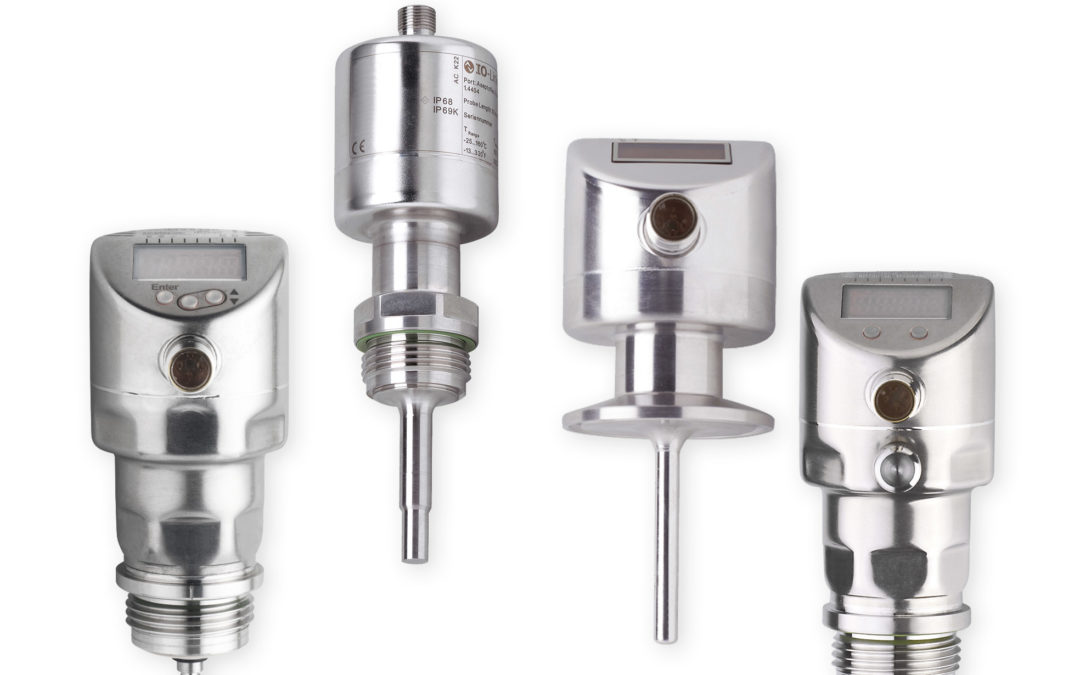
by Gary Mintchell | Oct 16, 2018 | Automation, Process Control, Technology
This week is another week on the road—five out of the last six—and now I’m in Chicago at Pack Expo. Much like IMTS, Pack Expo fills three halls of McCormick Place with machines. And machine components such as controls, drives, software, instrumentation, and the like.
Two weeks ago was Emerson Global Users Exchange. I wandered into the Emerson Automation Solutions booth not expecting much that was new. OK, got that one wrong.
If you want an indicator that Emerson has seriously expanded beyond oil & gas, keep on reading. It is now a serious player in this space, as well.
I once was an executive with a company that designed and built automated assembly machines. One interesting niche we had was an expert in helium mass spectrometry leak testing. I can give the sales pitch on the value of in-line, 100% testing of products.
Well, not as good as when Emerson explained its new food and beverage leak detection system.
Emerson’s RosemountTM CT4215 uses laser technology to detect leaks, reject defective packages with no production slowdown.
The Rosemount CT4215 is the first quantum cascade laser/tunable diode laser (QCL/TDL) continuous, inline detection system designed to help assure quality and safety, maximize production volume and decrease product waste for food and beverage products. The Rosemount CT4215 tests the seal and integrity of every bottle or package on a production line, detecting leaks at a sensitivity as low as 0.3 mm and automatically rejecting any defective bottle or package without slowing down production. This is in contrast to the traditional practice of testing occasional grab samples, which can leave a manufacturer vulnerable to low quality, unsafe food or beverages, reduced profitability and damaged reputation.
“In an industry being driven by an increasing consumer awareness of freshness and safety, manufacturers need solutions that allow them to assure these qualities while maintaining, or even increasing, efficiency,” said Peter Watmough, global leak detection product manager, Emerson Automation Solutions. “The Rosemount CT4215 provides packagers with an easy-to-install, easy-to-use assurance of freshness and safety. For the first time, food and beverage packagers can measure every package and bottle for leaks without having to compromise their production speed.”
Emerson further unveiled a new line of transmitters designed specifically for hygienic applications in the food and beverage industry with a compact form factor that will enable manufacturers to minimize downtime and lower production costs.
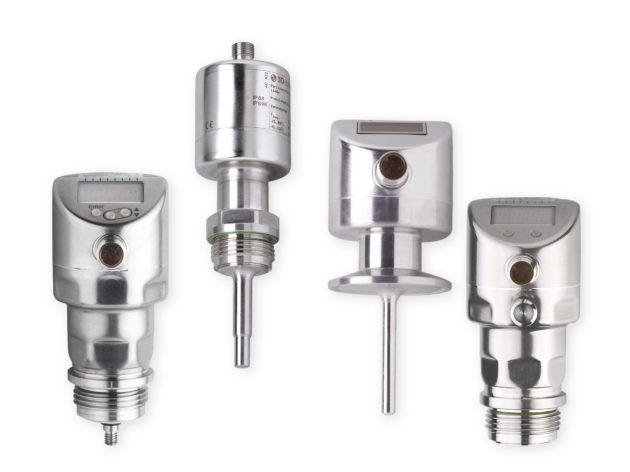
The new line of transmitters—Rosemount 326P Pressure, Rosemount 326T Temperature, Rosemount 327T Temperature and Rosemount 326L Level instruments—are designed to operate in the hygienic environments required by food and beverage manufacturers:
All comply with 3-A and FDA specifications, and are available with nine common industry process connections to ensure the right fit for new tanks and pipe fittings, as well as capability to be retrofitted on legacy systems. The new, small transmitters also can be mounted in tighter locations common on packaging machinery. Conventional 4-20 mA outputs and IO-Link connectivity make the transmitters easy to integrate with automation systems.
To give a sense of the breadth of Emerson Automation Solutions commitment to the space, following are some summaries of products.
Emerson’s ASCO G3 Fieldbus Electronics completely modular system plugs together via mechanical clips that allow easy assembly and field changes without dismantling the entire manifold, and its modules can be used in centralized or distributed applications.
One particular demonstration that will feature G3 Fieldbus Electronics is Emerson’s ASCO Bread Packing Machine. This state-of-the-art system provides full pneumatic automation control to ensure high-speed, repeatable packaging of food products. Its G3 Fieldbus integrates pneumatic control and provides real-time diagnostic data via an integrated webserver. It demonstrates flexible and energy-efficient design through proper sizing of pneumatic systems to fit any food packaging operation.
Emerson’s SolaHD Power Quality solutions remove limitations in the power architecture, allowing machine designers and operators to safely put power where they need it. These power supplies can be mounted directly on a machine, freeing packaging lines from design constraints; eliminating the complexity and cost of unnecessary enclosures and excess wiring; and providing the power for current and future automation capabilities.
Emerson’s Branson Ultrasonic Automated Cutting System provides precise food portioning with an almost frictionless cutting surface resulting in cleaner cuts, faster processing, minimal waste, longer blade life, higher productivity for greater throughput, and reduced downtime for cleaning.
Emerson helps packaging operations reduce process variation and decrease costly losses through technologies that deliver real-time insight into machine and process performance. With the accurate, relevant data in hand, packaging operations can achieve better reliability, reduce losses and contamination as well as ensure long-term performance.
With Emerson’s Micro Motion Filling Mass Transmitter (FMT), high-value packaging lines can accurately fill a wide range of container sizes and products with a single meter, eliminating the cumulative error associated with multiple-device measurement solutions. The Micro Motion FMT reliably measures fluids with entrained solids or gases or with changing viscosities, making it ideal for high-speed filling and dosing applications. Its Coriolis mass-based measurement is immune to variations in process fluid, temperature or pressure, and Automatic Overshoot Compensation (AOC) ensures repeatable fills even under valve performance changes. In addition, the Micro Motion FMT enables operators to track quality control and filling valve-performance data in real time to reduce filler maintenance and cost.
In addition, Emerson’s Micro Motion Multiphase Flow Meter technology can help complex process operations reliably log Gas Void Fraction and liquid density and concentration measurements. Utilizing Micro Motion Advanced Phase Measurement software, these meters also tolerate “real life” conditions of foaming, end-of-batch cavitation or slug flows to enable consistent measurements in challenging multiphase conditions. In addition, Smart Meter Verification delivers detection of coating or fouling within the meter for added clean-in-place efficiency and insight.
An interactive display illustrating pneumatics and IIoT features Emerson’s AVENTICS Smart Pneumatics Monitor, an IIoT hub allowing local data collection and analysis independent of the controller. The pick-and-place display illustrates “predictive maintenance” by showing the health and performance of valves, cylinders and shocks, which can minimize the risk of unplanned machine downtime to increase ROI.
To demonstrate how operators can protect personnel and reduce risk without impacting productivity. the Emerson booth will feature the Emerson ASCO 503 Series Zoned Safety Manifold (with G3 fieldbus electronics). It simplifies the design of a redundant pneumatic safety circuit with a manifold system that can be configured to shut down air and power only to the group of valves that controls the machine’s motion in the operator’s vicinity while the rest of the machine remains in operation. Multiple independent safety circuits can easily and cost-effectively be designed into a single pneumatic valve manifold, reducing the number of safety system components by up to 35 percent, requiring less plumbing, and shrinking the size of a safety system so that valuable real estate within the machine and manifold can be used for other purposes while still providing enhanced operator safety.

by Gary Mintchell | Oct 8, 2018 | Automation, Internet of Things, Manufacturing IT, Operations Management, Process Control, Technology
Last week was where industrial automation and information technology met along with my vice–soccer.
Emerson Automation Solutions–Digital Transformation, IT/OT collaboration, corporate acquisitions (GE Intelligent Platforms, once known as GE Fanuc, joins the fold), WirelessHART applications expand, flow control data becomes an integral part of digital transformation.
Hewlett Packard Enterprise (HPE)–Refinery of the Future tour of the Texmark refinery that I’ve written about before and CenterPoint Energy where digital boosts the electrical utility industry.
Marketers may still talk of IT/OT convergence as something coming. In many forward thinking plants it is here. Texmark CEO Doug Smith talks freely about the kick in the pants delivered by his insurance carrier that propelled him and his team toward finding innovative solutions to operations challenges.
I sometimes joke that “I’m the point of convergence of IT and OT”, or at least my blog and writing are.
Don’t believe hype or nay-sayers. The collaboration is real–among suppliers, partner ecosystems, managers, engineers. And real benefits are accruing.
Have you joined the 21st Century?
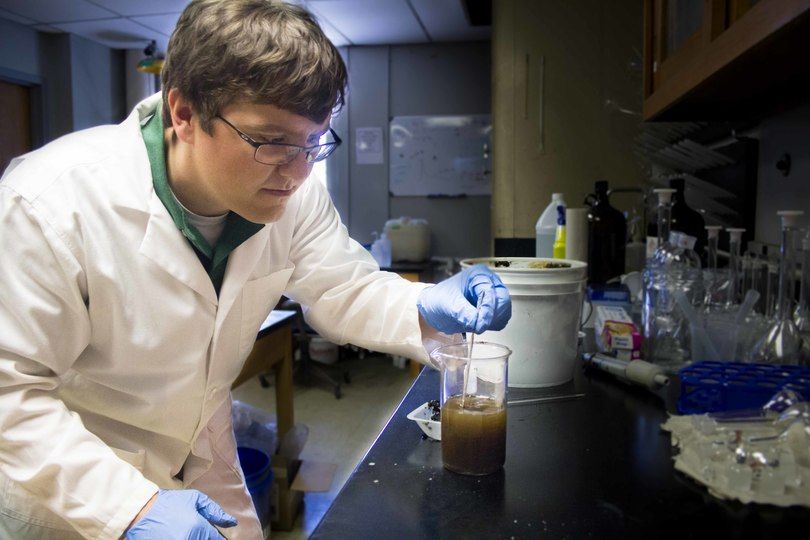
by Gary Mintchell | Aug 2, 2018 | News, Organizations
Something good can come from the wastes of dirty coal mining in West Virginia. West Virginia University researchers are opening a new facility to capture valuable materials from acid mine drainage from coal mining – turning the unwanted waste into critical components used in today’s technology-driven society.
Through a collaborative research and development program with the National Energy Technology Laboratory, part of the U.S. Department of Energy, WVU is opening the Rare Earth Extraction Facility to bolster domestic supplies of rare earths, reduce the environmental impact of coal-mining operations, reduce production costs and increase efficiency for processing market-ready rare earths.
Additionally, the technology could create jobs, helping to revive economies that have been historically dependent on the coal industry.
“Research on rare-earth extraction is one way that our University is fulfilling its most important mission—which is the land grant mission—to advance the prosperity of the people of this state,” President Gordon Gee said.
Representatives from WVU, NETL, DOE, representatives from West Virginia’s congressional delegation and others gathered July 18 in the High Bay Research Lab at the WVU Energy Institute’s National Research Center for Coal and Energy on campus to tour the new Rare Earth Extraction Facility and mark the start of this exciting new phase of research.
Brian Andson, director of the WVU Energy Institute, hosted the event and conveyed statements of support from the members of the state’s congressional delegation, including Rep. David McKinley and Sens. Joe Manchin and Shelley Moore Capito.
In addition, WVU welcomed keynote speaker Steven Winberg, DOE assistant secretary for fossil energy.
“It’s a pleasure to be in West Virginia, because West Virginians understand what it really means to have an ‘all-of-the-above’ energy strategy,” he said.
WVU is partnering with Rockwell Automation to facilitate market readiness through use of their sensor and control technologies in the new WVU facility.
Paul McRoberts, regional industry mining, metals and cement manager at Rockwell Automation, a 30-year veteran of the industry, said that this is one of the most exciting projects he has been a part of during his career and is excited to see the results of the new facility.
The facility is the researchers’ phase two project, worth $3.38 million, funded by NETL with substantial matching funding from WVU’s private sector partners. It follows on an earlier, phase one project, worth $937,000, to study acid mine drainage as feedstock for rare-earth extraction. The goal of the pilot facility is to test the technical and economic feasibility of scaling-up the technology to commercialize the separation and extraction process.
In addition, the team will be working to define a U.S.-based supply chain including the sludges created during acid mine drainage treatment and upstream to the acid-mine drainage source.
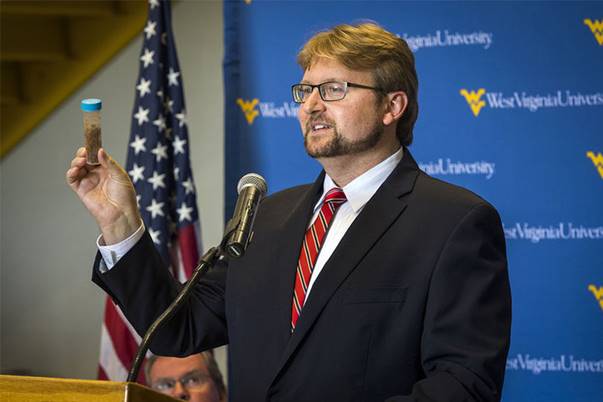
Brian Anderson holding a sample of dried acid mine drainage sludge containing rare earth elements. Photo by: M.G. Ellis
Neither rare nor earth
The name “rare earth elements” is a misnomer for important chemical elements that are actually neither rare nor earths.
A collection of 16 elements that hang off the bottom of the periodic table, they are moderately abundant but well dispersed in the Earth’s crust. They are identified as rare because it is unusual to find them in large concentrations.
The elements are all metals that carry very similar properties. In rare cases they are found in deposits together. Unlike an element such as gold, natural rare earth deposits never occur as pure metals, but are bonded in low-value minerals, making extraction challenging.
Conventional rare-earth recovery methods require an expensive, difficult and messy extraction process that generates large volumes of contaminated waste. China has been able to provide a low-cost supply of rare earths using these methods, and therefore, dominates the global market.
The conventional mining and extraction processes require mining ore from mineral deposits in rock, which is crushed into a powder, dissolved in powerful chemical solutions and filtered. The process is repeated multiple times to retrieve rare earth oxides. Additional processing and refining separates the oxides from their tight bonds and further groups them into light rare earths and heavy rare earths.
In usable form, these elements are necessary components of modern technologies. They are used in cellular phones, computers, televisions, magnets, batteries, catalytic converters, defense applications and many more segments of modern society.
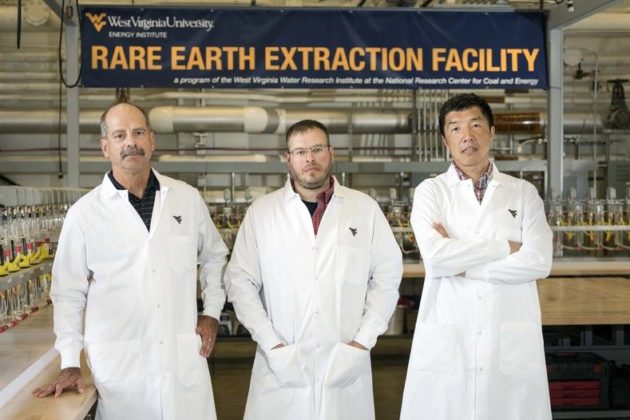
Members of the WVU rare-earth research team from L to R: Paul Ziemkiewicz, director of the West Virginia Water Research Institute; Chris Vass, facility operator; and Xingbo Liu, professor and associate chair of research, Statler College of Engineering and Mineral Resources, in the new Rare Earth Extraction Facility at the WVU Energy Institute/National Research Center for Coal and Energy. Photo by: M.G. Ellis
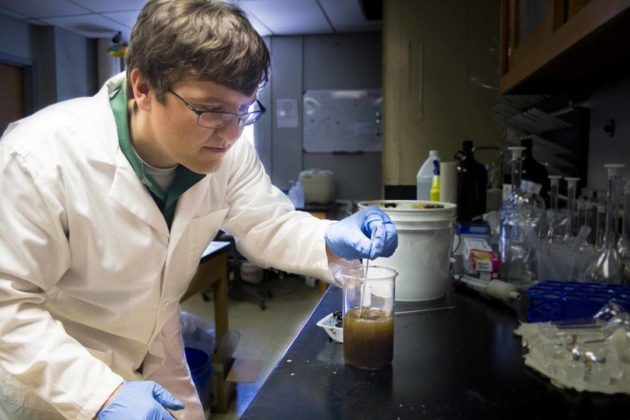
Aaron Noble, associate professor of mining and minerals engineering at Virginia Tech, is a co-investigator on the project working with the WVU team.
Paul Ziemkiewicz, director of the West Virginia Water Research Institute and principal investigator on the project, is an expert in acid mine drainage. He found that acid mine drainage, a byproduct of coal mining, “naturally” concentrates rare earths. Active coal mines, and in many cases state agencies, are required to treat the waste, which in turn, yields solids that are enriched in rare earth elements.
“Acid mine drainage from abandoned mines is the biggest industrial pollution source in Appalachian streams, and it turns out that these huge volumes of waste are essentially pre-processed and serve as good rare earth feedstock,” Ziemkiewicz said. “Coal contains all of the rare earth elements, but it has a substantial amount of the heavy rare earths that are particularly valuable.”
Studies show that the Appalachian basin could produce 800 tons of rare earth elements per year, approximately the amount the defense industry would need.
“Currently, acid-mine-drainage treatment is a liability, an environmental obligation,” Ziemkiewicz said. “But it could turn into a revenue stream, incentivizing treatment and creating economic opportunity for the region.”
Two-step process
Ziemkiewicz, Xingbo Liu, professor of mechanical engineering in the Statler College of Engineering and Mineral Resources, and Aaron Noble, associate professor of mining and minerals engineering at Virginia Tech, have designed the processing facility from the ground up using advanced separation technologies. Chris Vass, PE, is the operator of the new facility and a Summersville, West Virginia, native.
The researchers are using a two-step process to separate the rare earths from acid mine drainage: acid leaching and solvent extraction, which they call ALSX.
Researchers will dissolve the sludge in an acid. That solution will then be transferred to glass mixers and settlers that will make an emulsion that allows the oil phase and its extractant chemical to grab rare earths from the water, leaving the non-rare earth base metals like iron in the water
When that process is completed, the rare-earth-laden organic liquid enters another series of mixers and settlers that will strip the rare earths out as a concentrated solution and precipitate the rare earths as a solid, creating a concentrated rare earth oxide that can then be refined and further concentrated into pure rare earth metals to supply the metal refining industry.
The goal of the project is to produce three grams of rare earth concentrate per hour.
“For example, scandium, one of these rare earths, is worth about $4,500 per kilogram as an oxide, the form that it will leave this facility,” Anderson said. After refining, it would be worth $15,000 per kilogram.”
Unused materials will be returned to the acid mine drainage treatment plant’s disposal system, resulting in a negligible environmental footprint.
“This process uses an existing waste product that is abundant in our region,” Ziemkiewicz said. “It is also much easier to extract and requires much milder acids and has negligible waste materials when compared to conventional rare-earth recovery methods.”
A team, led by John Adams, assistant director of business operations at the WVU Energy Institute, is also defining the supply chain, moving upstream to the source and working with coal-industry partners. By producing a purified product at the mine, researchers could reduce transportation and waste handling costs.
“This could go a long way toward creating new economic opportunity for West Virginia and the region and make treating acid mine drainage a financial boon instead of a financial burden,” said Anderson.
Follow @WVUEnergy and @WVUToday on Twitter.

by Gary Mintchell | Jan 26, 2018 | Commentary, News
Let’s put aside politics and just talk good business strategies. I had a boss. He was quite conservative on the political scale. It was the time of “sustainability”. He thought that was only liberal, tree-hugger gibberish. I told him–think money. Less waste equals more profits. Waste is unsustainable.
Those of us who think Lean, think about how to reduce waste.
As usual, where politicians bicker, businesses do things to improve profits while also benefiting the environment.
This report came to me.
WORLD-LEADING MULTINATIONALS ACCELERATING A CLEAN ECONOMY – RE100 REPORT
- RE100 total renewable electricity demand of over 159TWh/yr is now equivalent to the 24thlargest country electricity use – ranking between Poland and Egypt;
- 25 companies had reached 100% renewable electricity by the end of 2016; five of these in 2016
- With three new members announced today, RE100’s 122 members are increasing renewables capacity globally, with operations spanning 122 countries.
LONDON: A rapidly growing group of ambitious multinational businesses are actively reshaping the energy market through their global investment decisions and accelerating a zero emissions economy, a new report release today (Tuesday January 23) shows.
‘Approaching the tipping point: how corporate users are redefining global electricity markets’, a new report from RE100 – a global corporate leadership initiative led by The Climate Group in partnership with CDP – tracks progress made in 2016-17 by companies committed to 100% renewable power.
The report also provides insight into emerging trends in corporate sourcing of renewables around the world, with 122 RE100 members operating in 122 countries averaging 1.3 times more renewables in their electricity mix than the global rate of renewable electricity use.
Thanks to falling costs of renewable energy technology, there is a notable shift away from renewable energy attribute certificates towards direct contracts with suppliers, as well as onsite generation and offsite grid-connected generators (power purchase agreements, or PPAs) – meaning that increasingly, members are directly growing renewable energy capacity.
Specific findings in the report include:
- 25 members had reached 100% renewable electricity by the end of 2016, with Autodesk, Elopak, Interface, Marks and Spencer and Sky reaching this goal during 2016, while Equinix and Kingspan surpassed their interim targets during the same year;
- The biggest achievers in 2016 included Bank of America, Astra Zeneca and Coca Cola Enterprises Inc., whose share of renewable electricity increased more than threefold;
- The proportion of renewable electricity being sourced via power purchase agreements grew fourfold in 2016, while the quantity of electricity sourced from onsite generation increased x15 (via supplier-owned projects) and x9 (via member-owned projects);
- 88% of respondents cited the compelling economic case for renewable electricity as a major driver – with 30 out of 74 reporting that renewable electricity was either cost competitive or delivered significant savings on energy bills;
- Policy barriers represent the most common challenge for RE100 companies, alongside a lack of availability of suitable contracts or certificates in some markets.
The report comes as government and business leaders gather at the World Economic Forum Annual Meeting in Davos, Switzerland, to discuss pathways to a sustainable economy, and a few days after Nike signed its second major wind contract, in Texas, US, that will take the company more than half way to reaching 100% renewable electricity globally as part of RE100.
Helen Clarkson, Chief Executive Officer, The Climate Group, said: “I’d like to congratulate every RE100 member accelerating the roll-out of renewable energy through their investment decisions. Their leadership is vital for overcoming policy challenges, shifting global markets, and inspiring many more companies to reap the economic benefits of renewable electricity. Rapidly growing demand from world-leading RE100 companies – and increasingly their suppliers and peers – means governments can confidently look to ratchet up targets in 2020 for slashing greenhouse emissions, to deliver on the Paris Agreement.”
Paul Simpson, Chief Executive Officer, CDP, said: “CDP data shows a jump in renewable energy procurement and that motivations are not only environmental but economic. With nearly 90% of companies driven by the economic case for renewables, this demonstrates a fast approaching tipping point in the transition to a zero-carbon economy. These companies prove that energy is becoming a board level issue across the globe and sustainability is essential for future business security. Now, it’s time to tip the balance and make 100% renewable the new normal.”
Regional trends
The report also shows key findings by region:
- In Europe, renewable energy has been the main source of electricity for RE100 members for the second year running. However, the lucrative PPA market is largely untapped; EU policy makers have an opportunity unlock its full potential through the next phase of the Renewable Energy Directive;
- In the US, we have seen a major increase in the use of PPAs by RE100 members, with continued momentum on renewable electricity sourcing by major businesses, despite political uncertainty;
- In India, the amount of renewable electricity consumed by our members has more than tripled, thanks to falling costs. The diversity of ways in which companies are sourcing renewables has also increased.
RE100 now brings together 122 global companies, with a collective revenue of over US$2.75 trillion and operations spanning six continents. Together they represent over 159TWh of demand for renewable electricity – more than enough to power Malaysia, New York State or Poland, and equivalent to the 24th largest electricity demand of all countries.
The Climate Group is an international non-profit organization, founded in 2004, with offices in London, Beijing New Delhi and New York. Our mission is to accelerate climate action. Our goal is a world of under 2C of global warming and greater prosperity for all, without delay. We do this by bringing together powerful networks of business and governments that shift global markets and policies. We act as a catalyst to take innovation and solutions to scale, using the power of communications to build ambition and pace. We focus on the greatest global opportunities for change. Our business campaigns RE100 (renewable electricity), EP100 (energy productivity) and EV100 (electric vehicles), brought to you as part of the We Mean Business coalition, help companies to reduce emissions, enhance resilience, and boost the bottom line. They champion leadership, encourage the sharing of best practice, and tackle barriers to action. Visit TheClimateGroup.org and follow us on Twitter @ClimateGroup and Facebook @TheClimateGroup.
Led by The Climate Group in partnership with CDP, RE100 is a collaborative initiative uniting the world’s most influential businesses committed to 100% renewable power. Renewables are a smart business decision, providing greater control over energy costs and driving innovation, while helping companies to deliver on emission reduction goals. RE100 members, including Global Fortune 500 companies, have a total revenue of over US$2.75 trillion and operate in a diverse range of sectors – from Information Technology to automobile manufacturing. Together, they send a powerful signal to policymakers and investors to accelerate the transition to a low carbon economy. Visit RE100.org and follow us on Twitter @theRE100 #RE100.
CDP is an international non-profit that drives companies and governments to reduce their greenhouse gas emissions, safeguard water resources and protect forests. Voted number one climate research provider by investors and working with institutional investors with assets of US$100 trillion, we leverage investor and buyer power to motivate companies to disclose and manage their environmental impacts. Over 6,300 companies with some 55% of global market capitalization disclosed environmental data through CDP in 2017. This is in addition to the over 500 cities and 100 states and regions who disclosed, making CDP’s platform one of the richest sources of information globally on how companies and governments are driving environmental change. CDP, formerly Carbon Disclosure Project, is a founding member of the We Mean Business Coalition. Please visit www.cdp.net or follow us @CDP to find out more.













